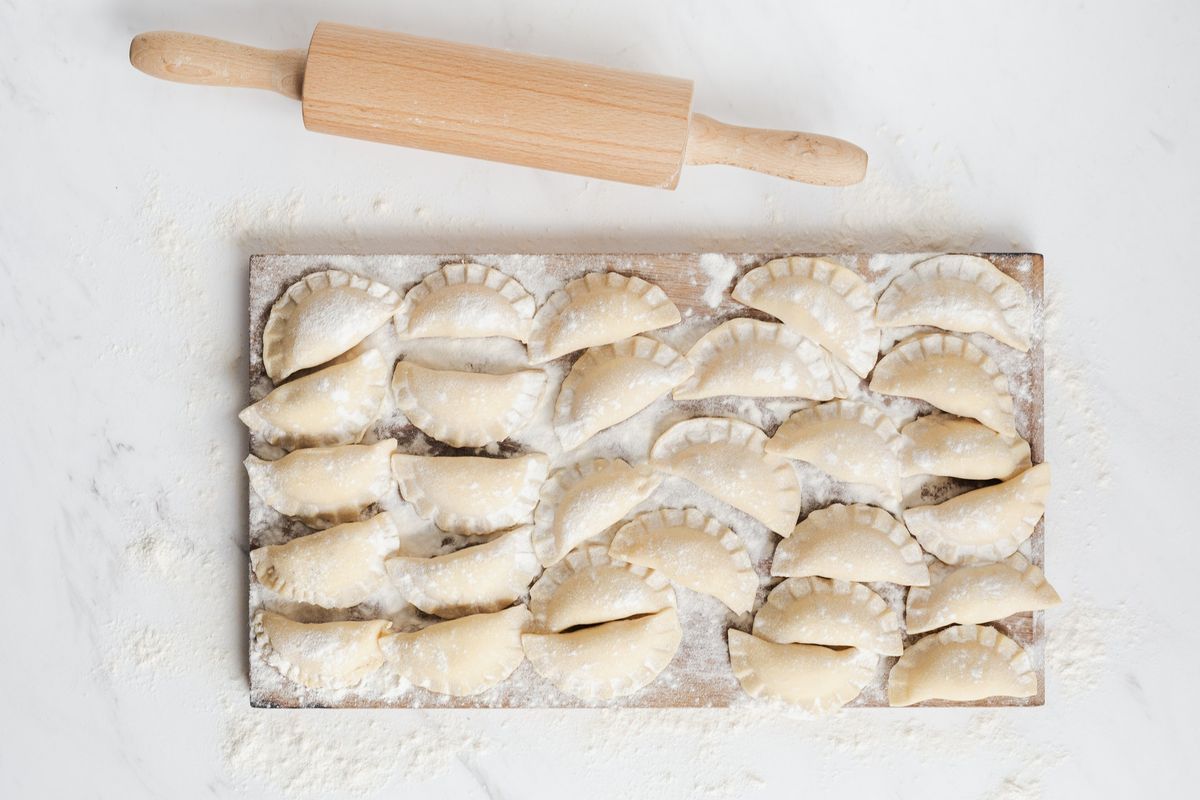Traditional foods for Chinese New Year – everything you need to know to prepare your own dumplings

A few minutes every morning is all you need.
Stay up to date on the world's Headlines and Human Stories. It's fun, it's factual, it's fluff-free.
It is customary for families to gather for a reunion dinner and enjoy traditional foods for Chinese New Year – and dumplings (饺子 Jiǎozi) are a traditional auspicious dish requisite for this celebration. This is because their shape resembles a Chinese sycee (細絲 sai-sì), a currency used in ancient times. It is believed that eating dumplings during Chinese New Year will bring prosperity and good fortune into the new year. We have all the background information you need about these traditional foods for Chinese New Year and how to prepare them for this year’s celebration.
How to prepare dumplings for Chinese New Year
Making dumplings involves four distinct steps: making the wrappers, preparing the filling, forming the dumplings and cooking. Follow our tips for each step to make your own dumplings this year for the upcoming Chinese New Year on February 12.
Making the wrappers
The dough recipe is typically five parts flour to one part water. Combine the ingredients, either the old fashioned way with chopsticks, or in a food processor. Forming the dumpling wrappers requires patience to roll it out into thin and even discs. Section the dough and roll it into a rope. It is important to make sure the unused dough is covered. Cut the rope into small pieces and press each piece into a small disc. Using a rolling pin, flatten the wrappers into a thin disc – roughly three inches in diameter. Dust the dough with some flour if it begins to stick.
Preparing the filling
Dumplings typically use a vegetable base with Chinese (Napa) cabbage or leeks, with pork, shrimp, chicken or even lamb, cornstarch and spices. It is important to ensure that the filling is dry before forming the dumplings, which means you may have to pat the vegetables dry after washing. Mincing the vegetables and meat for the dumpling filling is time-consuming, however, it is crucial. Dumplings are small which means that a coarse chop will not give you much of a variety of ingredients in each mouthful.
Forming the dumplings
Filling and forming the dumplings requires a skilled hand. It is important not to over fill the dumplings and to seal it well. You get extra points for forming the dough into even, overlapping pleats. You can also purchase dumpling presses that make this process easier. Plastic varieties are inexpensive and can also be used for making pirogies and even ravioli.
Cooking
As one of the most versatile traditional foods for Chinese New Year, there are a variety of ways to prepare this dish for different flavors and textures. Dumplings can be boiled, steamed or even fried. Cooking dumplings also requires a steady hand to prevent the wrappers from separating.
Boiling
- Bring a pot of water to a full boil on high heat. Gently place the dumplings in the pot. Push the dumplings around with the back of a spoon to prevent them from sticking to the pot. Cover with a lid.
- When the water reaches a full boil, add about 120 ml/0.5 cups of cold water to the pot and cover. Repeat this process twice. When the dumplings are cooked, they should be floating on the surface.
- Place the dumplings in a strainer and briefly run cold water over them. Drain and serve immediately.
Steaming
- Put the dumplings into a steamer basket. Coat the bottom of the steamer basket with oil or line with parchment paper to prevent the dumplings from sticking.
- Bring a pot of water to a full boil and place the steamer basket in. Place a lid on the pot and cook the dumplings on medium heat for roughly 10 minutes.
Pan-frying
- Cover the surface of the pan with oil and place on high heat. Put the dumplings on the pan.
- When the bottom of the dumplings is golden brown, pour in cold water – enough to cover a third of the dumplings. Cover the pan with a lid.
- When the water evaporates, uncover the pan. Cook the dumplings for roughly 30 seconds more to crisp.
Dumpling fillings have specific meanings
Chinese sauerkraut (酸菜 suāncài) is typically not used to make dumplings at the Spring Festival because it is believed to bring misfortune. It is a tradition to eat dumplings with a cabbage (白菜 báicài) filling on the eve of the New Year, as it represents the blessing for a well-off life for a hundred years. It also represents the enduring love between new couples, driven from the popular idiom, 白头到老 “white head until old,” which means to live in conjugal bliss until the white hairs of old age or “until death do us part." Leek (韭菜 jiǔcài) filling is also used to prepare lucky dumplings as it represents long-term wealth. It is believed to be a wish for the family to be healthy, harmonious and filled with happiness (久: 日久生情, 永久和平 “familiarity breeds fondness,” “enduring peace”).
Fish stuffing means surplus wealth as the pronunciation for fish (鱼 yú) in Chinese also means “surplus” (余 yú). Eating fish dumplings symbolizes the desire to have a lot of remaining money in the new year. Beef stuffing represents economic growth in the new year, as the bull is a symbol of strength favored by stock investors. In Chinese, the term “bull market” (牛市 niúshì) refers to a period of rising stock prices.
Have a tip or story? Get in touch with our reporters at tips@themilsource.com




Comments ()